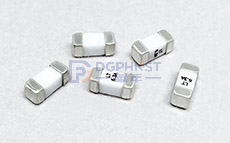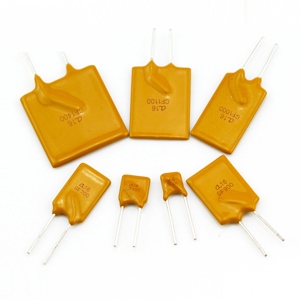The safety differences between disposable fuses and self-healing fuses mainly stem from their essential differences in failure modes, application scenarios, and safety risks. The following is a specific analysis:
The severity of the consequences of failure varies
Its core function is to completely cut off the circuit by melting, which belongs to the "ultimate protection" means. Once the circuit breaker fails (such as failure to disconnect in a timely manner or incorrect circuit breaker), it may cause equipment damage, overheating, and even fire. Therefore, it is necessary to obtain mandatory safety certification (such as UL, IEC, etc.) to ensure that the fuse characteristics (rated current, breaking capacity, temperature rise, etc.) fully comply with the design standards and avoid catastrophic consequences.

Self healing fuse (PPTC):
By using temperature sensitive materials to increase resistance during overcurrent, protection is achieved, and the fault is automatically reset after troubleshooting. Although its failure may result in protection delay (such as long recovery time or resistance drift), it will not cause permanent circuit breakers or direct safety accidents. The risk is relatively controllable, therefore the mandatory requirements for safety regulations are relatively low.

Differences in application scenarios and reliability requirements
Disposable fuse:
Commonly used in irreversible high-risk scenarios (such as power input stages, high-voltage circuits), requiring absolutely reliable fuse breaking capability. For example, if the fuse in a household appliance fails, it may directly cause the risk of electric shock, so it is necessary to ensure its performance consistency through safety regulations.
Self recovery fuse:
Mostly used in recoverable low-risk scenarios such as USB ports and battery protection, with a focus on temporary overcurrent protection. Its design allows for a certain degree of fault tolerance (such as multiple triggering), and usually accompanies other protection mechanisms (such as system restart) after the failure, with low dependence on safety certification.
Technical characteristics and testing complexity
Disposable fuse:
Accurate control of melting time and energy tolerance is required, with strict testing items such as breaking capacity testing and durability testing. Safety certification needs to cover performance under extreme working conditions, with high certification costs but clear necessity.
Self recovery fuse:
Performance is greatly affected by environmental temperature, aging, and other factors, and parameters may drift after resetting. Its protection effect relies more on system level design (such as coordination with other protection devices), and the significance of individual certification is limited. Therefore, system wide certification is usually used instead of component level mandatory certification.
Market awareness and responsibility allocation
As a traditional safety component, disposable fuses have been widely included in regulatory systems (such as electrical safety laws in various countries), and manufacturers need to bear clear responsibilities.
Self recovery fuses are often regarded as "auxiliary protective devices", and safety responsibilities are more borne by the manufacturer through system design rather than relying solely on component certification.
The essence of mandatory safety regulations is a balance between risk and cost:
Due to the serious consequences of failure and critical application scenarios, disposable fuses must be certified at the component level to ensure absolute reliability;
Due to the controllable risk and reliance on system design, the certification requirements for self recovering fuses have been transferred to the whole machine testing process, rather than requiring the components themselves to pass safety regulations.
The difference between the two reflects the logic of "graded protection" in safety engineering, rather than the technical superiority or inferiority.
